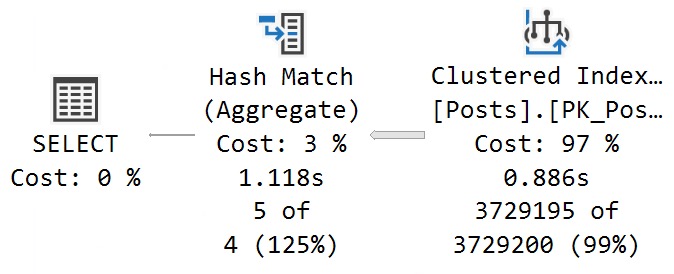Loud Engine
If you’re ever on a long flight and want something to fall asleep to, ask a DBA how to set MAXDOP.
Sometimes I even ask myself that question when I’m tossing and turning at night.
There are a lot of things to consider when fixing settings globally across a workload. For parallelism, it’s less about individual query performance, and more about overall server/workload performance
After all, letting every query go as absolutely parallel as possible is only good up to a point; that point is usually when you start regularly running out of worker threads, or your CPUs could double as crematoriums.
Setting MAXDOP is about limiting the damage that a parallel workload can do to a server. The expectation is that a query running at DOP 8 will run 8x faster than a query running at DOP 1.
But setting MAXDOP for every query isn’t something you catch even the most persnickety performance tuners doing. Perhaps some of the more critical ones, but you know…
Let Me Rust
I’m not going to demo DOP feedback in this post, I’m just going to show you the situation that it hopes to improve upon.
To do that, I’m going to run a simple aggregation query at different degrees of parallelism, and show you the changes in query timing.
At DOP 1:
The query runs for 1.1 seconds, with 886ms consumed while scanning the Posts table.

At DOP 2:
The query runs just about twice as fast, starting with the scan of the Posts table taking about half as long. This is good scaling. Add one CPU, go twice as fast as you did with one CPU.

At DOP 4:
The gets about twice as fast again! The scan of the Posts table is now down to 263ms, and the query in total is at 330ms. Adding in two more cores seems a good choice, here.

At DOP 8:
The query no longer continues to get 2x faster. This isn’t a knock against DOP 8 in general; my query just happens to hit a wall around DOP 4. With 4 additional CPUs, we only save ~130ms at the end of the day.

Why This Is Cool
This new feature will help DBAs have to worry less about getting MAXDOP absolutely right across the board. Who knows, we may even see a day where MAXDOP is left at zero.
But you’d never skip that installer step, would you?
Anyway, for anyone out there who is paranoid about setting DOP too high, this should help your queries find a more approximately-good middle ground.
Hopefully it works as advertised.
Thanks for reading!
Going Further
If this is the kind of SQL Server stuff you love learning about, you’ll love my training. I’m offering a 75% discount to my blog readers if you click from here. I’m also available for consulting if you just don’t have time for that and need to solve performance problems quickly.
Related Posts
- SQL Server 2022 CTP 2.1 Improvements To Parameter Sensitive Plan Optimization
- SQL Server 2022: Introduces the DATETRUNC Function, So You Can Truncate Your Dates And Stuff
- SQL Server 2022 Parameter Sensitive Plan Optimization: Does Not Care To Fix Your Local Variable Problems
- SQL Server 2022 Parameter Sensitive Plan Optimization: Sometimes There’s Nothing To Fix
One thought on “What’s The Point Of DOP Feedback In SQL Server 2022?”
Comments are closed.